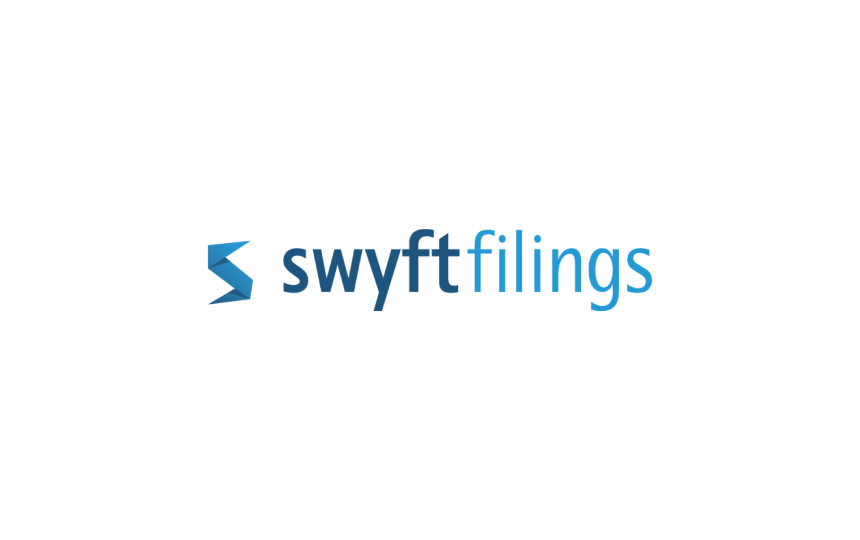How an SBA Paycheck Protection Program Loan Can Help Your Small Business
Swyft Filings is committed to providing accurate, reliable information to help you make informed decisions for your business. That's why our content is written and edited by professional editors, writers, and subject matter experts. Learn more about how Swyft Filings works, our editorial team and standards, what our customers think of us, and more on our trust page.
Swyft Filings is committed to providing accurate, reliable information to help you make informed decisions for your business. That's why our content is written and edited by professional editors, writers, and subject matter experts. Learn more about how Swyft Filings works, our editorial team and standards, what our customers think of us, and more on our trust page.
Quarantines, stay-at-home orders and social distancing are impacting everyone, but small businesses are often hit the hardest. You’re doing whatever you can to sustain your small business during the COVID-19 pandemic, but customers are staying home, profits are down and business owners are faced with hard decisions. One choice no business owner wants to face is the possibility of laying off loyal employees just to keep the business afloat.
Fortunately, some relief for small businesses is on the way in the form of the U.S. Small Business Administration’s Paycheck Protection Program.
What Is the SBA Paycheck Protection Program?
The Paycheck Protection Program (PPP) is a loan plan for small businesses, part of the $2.2 trillion Coronavirus Aid, Relief, and Economic Security Act (CARES) recently passed by the U.S. Senate. The PPP sets aside $350 billion for small business loans. The best news is that the loans are partially or entirely forgivable, depending on your situation. This means struggling business owners can keep more of their money.
What Can I Use the PPP Loan For?
Just as the name implies, the Paycheck Protection Program is intended to protect your payroll. However, the term “payroll” is defined quite broadly in this case. You can use the money to cover:
Wages, salaries and commissions
Health care costs
Paid leave
Mortgage interest payments
Rent
Utilities
Debt incurred before the coverage period
The loan can be used to cover these expenses for any 8-week period between February 15 and June 30, 2020.
Does My Small Business Qualify for a PPP Loan?
Any company with 500 or fewer employees is eligible for the program; this includes:
Nonprofit organizations
SBA-approved, independently-owned franchises
Sole proprietors
Self-employed individuals
Independent contractors
Gig-economy workers
How Much Can I Borrow?
Each business can borrow 250% of their average monthly payroll expenses, intended to cover business expenses for eight weeks. The maximum loan amount is $10 million.
The terms of the loan will be determined on a case-by-case basis, but the maximum terms cannot exceed a 10-year term with 4% interest. Business owners pay no loan fees and require no collateral or personal guarantees. You can defer loan payments for at least six months to one year.
How Much of the Loan Will Be Forgiven?
The main goal of the PPP is to help you keep employees on the payroll. The entirety of the loan will be forgiven if you keep all your employees. If some employees are laid off, you can still receive a proportional amount in loan forgiveness. For example, if you have 100 employees and lay off ten, 90% of the loan will be forgiven. If some employees have already been laid off, you can still get the full amount of forgiveness if they’re rehired by June 30, 2020.
The loan will be forgiven eight weeks after you first take out the loan. Lenders will work with you to determine the correct amount of forgiveness. If the full principal of the loan is forgiven, you won’t even have to pay interest on the loan. Any amount of the loan that isn’t forgiven will be subject to the terms you agreed upon with your lender.
How Do I Apply for an SBA Paycheck Protection Loan?
You can apply for a PPP loan through authorized SBA lenders, including banks, credit unions, and fintech lenders. Some banks already have pre-approval forms available on their websites. You can find an SBA-approved lender on the SBA website and look at the sample application published by the SBA.
Which lender you choose depends on your situation. If you have a pre-existing relationship with a trusted lender, that would be a good place to start. If not, we recommend calling several banks and local credit unions to see which one offers the largest loan or best terms. There has been a mad dash already so you want to apply sooner rather than later.
If you have already applied for a coronavirus-related Economic Injury Disaster Loan (EIDL), you can refinance it into a PPP to get loan forgiveness, but you can’t take out both loans for the same purposes. If you took out a state bridge loan, you are still eligible to apply.
Banks were scheduled to take loan applications starting April 3, 2020, and the application deadline is June 30, 2020.
What to Do Next
You may have more questions on the Paycheck Protection Program, and frankly, so do we. As of this writing, the SBA published this 31-page program description and this executive summary. Although the program is officially live, lenders still expect to get more detailed instructions from the SBA on both the loan process and the forgiveness requirements. Be sure to check in with us often, as we’ll keep you apprised of further details and developments.
Meanwhile, slow business is no excuse for an ambitious business owner to rest on their laurels, and there are plenty of things you can do to improve your business while we all wait out the coronavirus crisis. Read our article “What You Can Do For Your Small Business While Waiting for Customers to Return” for more information.
4/7/2020 Update - The SBA provided additional FAQs last night.
How do I calculate the average monthly payroll expenses?
Among other things, the SBA clarified that when you have an employee who makes in excess of $100,000, you can include her $100,000 compensation in the calculation of the monthly payroll AND non-cash benefits, including:
employer contributions to defined-benefit or defined-contribution retirement plans;
payment for the provision of employee benefits consisting of group health care coverage, including insurance premiums; and
payment of state and local taxes assessed on the compensation of employees.
The SBA also clarified that, in general, borrowers can calculate their aggregate payroll costs using data either from the previous 12 months or from the calendar year 2019. For seasonal businesses, the applicant may use average monthly payroll for the period between February 15, 2019, or March 1, 2019, and June 30, 2019. An applicant that was not in business from February 15, 2019, to June 30, 2019, may use the average monthly payroll costs for the period January 1, 2020, through February 29, 2020.
Borrowers may use their average employment over the same time periods to determine their number of employees, for the purposes of applying an employee-based size standard. Alternatively, borrowers may elect to use SBA’s usual calculation: the average number of employees per pay period in the 12 completed calendar months prior to the date of the loan application (or the average number of employees for each of the pay periods that the business has been operational, if it has not been operational for 12 months).
Remember, as explained above, payroll expenses are interpreted broadly. But, the SBA clarified last night the role of taxes in determining the payroll costs for both determining the amount of eligibility and the forgiveness amounts. The SBA wrote: "Under the Act, payroll costs are calculated on a gross basis without regard to (i.e., not including subtractions or additions based on) federal taxes imposed or withheld, such as the employee’s and employer’s share of Federal Insurance Contributions Act (FICA) and income taxes required to be withheld from employees. As a result, payroll costs are not reduced by taxes imposed on an employee and required to be withheld by the employer, but payroll costs do not include the employer’s share of payroll tax. For example, an employee who earned $4,000 per month in gross wages, from which $500 in federal taxes was withheld, would count as $4,000 in payroll costs. The employee would receive $3,500, and $500 would be paid to the federal government. However, the employer-side federal payroll taxes imposed on the $4,000 in wages are excluded from payroll costs under the statute."
Swyft Blog
Everything you need to know about starting your business.
Each and every one of our customers is assigned a personal Business Specialist. You have their direct phone number and email. Have questions? Just call your personal Business Specialist. No need to wait in a pool of phone calls.




